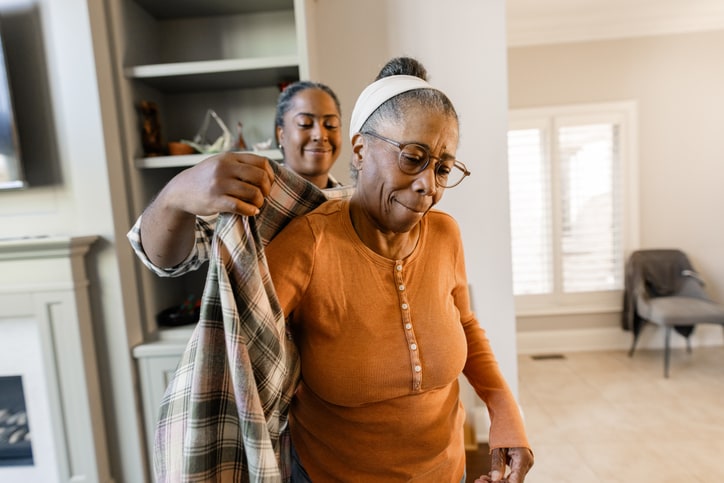In this article
For low-income seniors, it’s a struggle to afford assisted living — and the proof is in the numbers: The National Council on Aging reports that more than 17 million adults over the age of 65 make $2,608 or less a month, only two times the federal poverty level. Yet the average monthly cost of assisted living in the U.S. is $5,900.
“The rise in costs for assisted living over the years can be attributed to factors such as inflation, increased demand for qualified caregivers and changes in wage and overtime payment legislation,” explains Sandi Petersen, a doctor of nursing practice and the senior vice president of health and wellness at Pegasus Senior Living. “But overall, assisted living is still a cost-effective option for seniors who need some help with daily activities but do not require the extensive medical care provided in nursing homes.”
Looking for assisted living options on a low income? Here, experts offer a look into the most affordable types of care to consider to help seniors find the right fit for their financial situation.
Key takeaways
- Low-income assisted living communities tend to either accept funding directly through federal or state programs or accept government-assisted payments from residents.
- Many states have local programs through which individual counties own and manage assisted living communities which only accept low-income seniors.
- By utilizing cost-saving strategies, families can make assisted living more affordable and ensure their loved ones receive the care they need without undue financial strain.
What is low-income assisted living?
A low-income assisted living community is a long-term residential housing option designed for seniors who cannot afford the full cost of standard assisted living. These communities tend to either accept funding directly through federal or state programs to provide care or accept government-assisted payments from residents, like Medicaid, which lowers out-of-pocket fees.
“Most communities charge a base rate for room and board and then layer on care fees depending on the assistance needed,” explains Patrick Mish, chief executive officer of SilverStay, a health care services company that helps families find long-term care options based in Fairfax, Virginia. “These include bathing, medication management and dementia care.”
Understanding this cost structure is an important step for finding the most affordable assisted living option, according to Petersen. This is because each fee tends to be covered differently depending on the facility and form of financial assistance that will be used.
“Medicaid coverage for assisted living facilities varies widely across the U.S., and unfortunately, in many states, it’s not keeping pace with the need.”
— Patrick Mish, long-term care expert
5 affordable assisted living options for low-income seniors
From Medicaid-funded facilities to subsidized residential housing, here are the most utilized low-income assisted living options in the country, according to the experts we spoke to:
1. Medicaid-funded assisted living facilities
For seniors whose monthly income limits make them eligible for Medicaid, choosing to live in a Medicaid-funded assisted living facility is one of the best ways to save money because these benefits can help pay costs in two ways:
- Federal Medicaid benefits can be used to pay for personal services within assisted living communities that accept Medicaid as a form of payment, but they cannot cover room and board costs.
- State Medicaid plans and waivers offer additional assistance for Medicaid recipients through Home and Community Based Service (HCBS) waivers, which are designed to pay for personal care and supportive services provided in assisted living communities.
“However, Medicaid coverage for assisted living facilities varies widely across the U.S., and unfortunately, in many states, it’s not keeping pace with the need,” Mish says.
Eligibility requirements also vary greatly by state which can make it hard to utilize. For example, in states with Medicaid assisted living waiver programs, a person must qualify for nursing home level of care to receive coverage, explains elder law attorney Evan H. Farr, principal at Farr Law Firm in Fairfax, Virginia. “This is because these are similar to waivers that help pay for in-home care for those in need of the nursing home level of care,” he says.
2. Federally subsidized senior housing communities
The U.S. Department of Housing and Urban Development (HUD) administers federal aid to public housing agencies (PHAs) that place low-income seniors in communities designed with rents they can afford, many of which offer assisted living services. There are two HUD programs that manage housing for low-income seniors:
- Housing Choice Voucher Program (Section 8) helps low-income seniors find low-rent public housing which can offer personal care services and assistance. Section 8 doesn’t specifically pay for assisted living, but the affordable rents make public housing a viable low-income assisted living option for many seniors.
- HUD Section 202, also known as the Supportive Housing for the Elderly Program, is tailored to fund housing for low-income seniors. “Sadly, however, no new funding has been available for this program since 2012,” according to Farr. “But senior housing developments that were built with Section 202 funds continue to provide housing and services to their residents,” he says.
Eligibility for federally subsidized assisted living is determined by income limits developed by HUD. But Farr notes that PHAs often have waiting lists so families should plan early if they are considering public housing as an assisted living option. He recommends starting your search with the HUD Resource Locator which allows users to search for affordable housing options designated for seniors by location.
3. State-funded assisted living benefits
The majority of states have programs designed to help supplemental security income (SSI) recipients pay for assisted living. Through these programs, low-income seniors receive a state-funded payment called optional state supplements (OSS) to boost their monthly income.
Read more:
Utilizing state funds is a great low-income assisted living option especially for seniors on Medicaid since both benefits can be used together: OSS to cover the cost of room and board and Medicaid to cover services fees. However, finding an assisted living community that accepts state-funding can be tricky, Farr notes.
“For example, in Virginia, there’s a program called the Auxiliary Grant (AG) that will help pay for an assisted living facility,” Farr says. “But not every assisted living facility in the state participates in this program, and those that do typically only have one or two AG beds available which tend to not get frequent turnover because they’re occupied for lengthy periods.”
4. Locally subsidized senior housing and assisted living communities
Many individual cities or counties have programs through which they own and manage assisted living communities that only accept low-income seniors. For example, in Fairfax County, Virginia, The Fairfax County Redevelopment and Housing Authority (FCRHA) owns housing complexes throughout the area and rents certain units only to low-income seniors.
Locally subsidized housing options vary by region, Mish notes. “Some areas, like Maryland, where I am based, offer quality care for $2,000 to $3,500 in smaller residential homes,” Mish says. “These smaller homes don’t exist everywhere due to regulatory restrictions, but they can deliver excellent outcomes for a much lower price when done well.”
5. Veteran health benefits and allowances
The Department of Veterans Affairs (VA) pays for long-term care services for eligible veterans living in a variety of care settings, including assisted living. Qualifying families can get help covering the cost of the following health care services, according to the VA:
- 24/7 nursing and medical care.
- Physical therapy.
- Help with activities of daily living (ADLs).
- Comfort care and help with managing pain.
- Support for caregivers who may need skilled help or respite.
The VA also supplements eligible veteran’s pension benefits through the Housebound Aid and Attendance Allowance Program to help low-income seniors afford assisted living services. This tax-free benefit can cover home care and nursing home costs as well.
How to find affordable assisted living in your area
You can use Care.com to find assisted living options available in your area. Experts recommend using the Eldercare Locator, a public tool hosted by the U.S. Administration on Aging that connects seniors and their families with services in their community. You can also contact your Local Area Agencies on Aging (AAAs).
“Don’t hesitate to negotiate the rates and inquire about any available promotions.”
— Sandi Petersen, doctor of nursing practice
Final expert tips to afford assisted living on a low income
Once you have a list of low-income assisted living options to consider in your area, experts recommend touring each community and considering these additional ways to save money:
- Negotiate rates and ask about discounts. Some facilities may offer discounts for longer stays or for paying upfront. “Don’t hesitate to negotiate the rates and inquire about any available promotions,” Petersen says.
- Opt for shared or smaller accommodations. Choosing a shared room or smaller apartment can significantly reduce costs compared to private arrangements, Mish says.
- Leverage additional financial assistance options. Long-term care insurance, reverse mortgages and life insurance policies are just a few additional ways seniors pay for assisted living. Experts recommend consulting with an elder law attorney or financial advisor to assess all your options.
- Explore other long-term care solutions. Assisted living is more affordable than other options, such as nursing homes, but can be more expensive than in-home care. “If the level of care needed is minimal, in-home care might be a more cost-effective option,” Petersen says. “This can be a temporary solution while exploring assisted living options.”
“By utilizing these strategies, families can make assisted living more affordable and ensure their loved ones receive the care they need without undue financial strain,” Petersen says





